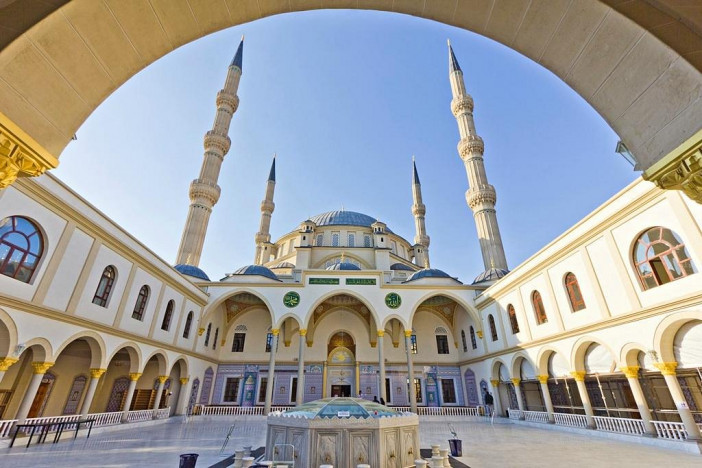Nizamiye Masjid
History
Turkish businessman Ali Katrcolu intended to construct Ottoman-style buildings where none had existed. The project was relocated to South Africa because the United States was unable to find a suitable location. Fethullah Gulen advocated making this decision.
The project was started on October 1, 2009, and on October 4, 2012, South African President Jacob Zuma gave it its formal opening.
The Nizamiye Madrasahs, a system of higher education institutions employed in Baghdad and other areas of the Islamic world in the 11th century, served as the model for the mosque's name.
Urban and Architectural
The mosque's building work started in October 2009 and was finished in 2012. The Ottoman Selimiye Mosque from the 16th century served as the inspiration for the mosque's fundamental design. Mimar Sinan created this mosque, which is situated in Edirne, Turkey. The Selimiye Mosque was scaled down by 80% compared to the Nizamiye Masjid. A South African architect modified Turkish architectural ideas for the mosque to meet South African building codes.
The mosque's main dome is 48 tons of lead and measures 31 meters (102 feet) high by 24 meters (79 feet) wide. 21 smaller domes and 4 additional half-domes are present. The mosque's interior features calligraphy on the ceiling and genuine Turkish ceramics on the walls.
Turkish art is imprinted on the dome, and is reflected on the specially designed carpet below. There are three platforms and stairs leading up to four 55 m (180 ft) tall minarets. 232 stained glass windows may be found.
Within the confines of the primary prayer hall for men and the prayer gallery for women, a total of 6,000 people can be seated during a service. One of the courtyards contains five wudhu facilities. On exceptional occasions, the mosque is illuminated at night in phosphorescent green and purple.
Description
Details
Location
Midrand, South Africa
Worshippers
Main prayer halls: 6,000 people, Main conference hall: 800 people
Owners
Ali Katırcıoğlu
Architect Name
Year of Build
2012
Area
two third of a hectare in a 10 Hectares of land
Drawings
Map
History
Turkish businessman Ali Katrcolu intended to construct Ottoman-style buildings where none had existed. The project was relocated to South Africa because the United States was unable to find a suitable location. Fethullah Gulen advocated making this decision.
The project was started on October 1, 2009, and on October 4, 2012, South African President Jacob Zuma gave it its formal opening.
The Nizamiye Madrasahs, a system of higher education institutions employed in Baghdad and other areas of the Islamic world in the 11th century, served as the model for the mosque's name.
Urban and Architectural
The mosque's building work started in October 2009 and was finished in 2012. The Ottoman Selimiye Mosque from the 16th century served as the inspiration for the mosque's fundamental design. Mimar Sinan created this mosque, which is situated in Edirne, Turkey. The Selimiye Mosque was scaled down by 80% compared to the Nizamiye Masjid. A South African architect modified Turkish architectural ideas for the mosque to meet South African building codes.
The mosque's main dome is 48 tons of lead and measures 31 meters (102 feet) high by 24 meters (79 feet) wide. 21 smaller domes and 4 additional half-domes are present. The mosque's interior features calligraphy on the ceiling and genuine Turkish ceramics on the walls.
Turkish art is imprinted on the dome, and is reflected on the specially designed carpet below. There are three platforms and stairs leading up to four 55 m (180 ft) tall minarets. 232 stained glass windows may be found.
Within the confines of the primary prayer hall for men and the prayer gallery for women, a total of 6,000 people can be seated during a service. One of the courtyards contains five wudhu facilities. On exceptional occasions, the mosque is illuminated at night in phosphorescent green and purple.
Description



